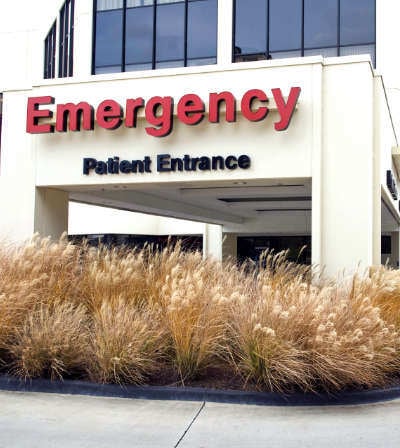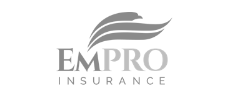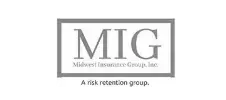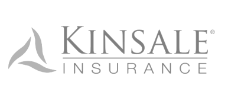Emergency Medical Centers Insurance

Emergency Medical Centers deliver rapid assessment, stabilization, and triage for acute conditions. Because decisions are made under intense time pressure, these centers face heightened exposure to claims tied to diagnosis, medication safety, discharge, and crowding.
Homewood Insurance helps EMCs secure tailored coverage that reflects real on-shift risks—triage protocols, procedural oversight, documentation, and transfer obligations.
This page explains the following
- What Insurance Includes – a practical breakdown of professional and general liability protections for EMCs.
- Cost of Coverage – realistic premium ranges and the factors that drive price.
- Higher-Risk Activities – procedures and practices that elevate premiums or trigger exclusions.
- Why Work With Homewood – how we help you avoid gaps and stay compliant.
Get a Free Quote Now
The fastest way to find the most suitable insurance coverage for emergency medical centers is to fill out our quick quote form, so we can give you an idea of the type of insurance coverage that best suits you.
Homewood Insurance works with a number of different carriers to ensure you have the most suitable insurance coverage at the best price.
Insurance for Emergency Medical Centers can include:
- Covers acute emergency care, trauma stabilization, and rapid triage.
- Protection for allegations of misdiagnosis, delayed care, and medication error.
- Staff coverage for physicians, nurses, EMTs, paramedics, radiology, respiratory, and lab teams.
- Optional protection for observation beds, on-site imaging, point-of-care testing, and minor procedures.
- Defense costs paid in addition to limits; tail and retroactive coverage available.
- Medical payments coverage for minor incidents.
- Common limits up to $1,000,000 per claim / $3,000,000 aggregate.
Insurance for Emergency Medical Centers can include:
Malpractice or liability insurance can provide essential protection against these risks:
-
Professional Liability (Malpractice)
- Triage, stabilization, procedural care, observation unit services, and transfers.
- Allegations tied to diagnostic decisions, delayed treatment, or medication administration.
- Coverage for physicians, nurses, paramedics, EMTs, radiology techs, respiratory therapists, and lab personnel.
- Optional inclusion of on-site labs, imaging, procedural sedation, laceration repair, and minor surgical capabilities.
- Regulatory defense relating to transfer obligations and survey findings.
- Claims-made policies with flexible limits, prior-acts, and tail options.
-
General Liability
- Visitor injuries in entrances, waiting rooms, corridors, and parking areas.
- Property damage to others during facility operations or community events.
- Personal and advertising injury (defamation, content disputes).
- Medical payments for minor injuries, regardless of fault.
-
Recommended add-ons
-
- Cyber Liability Insurance (electronic health records, ransomware, device integrations).
- Employment practices (hiring, harassment, wage and hour).
- Directors & Officers (board and executive decisions for multi-site operators).
- Sexual Abuse and Molestation Insurance (limited coverage; requires screening and reporting protocols).
- Umbrella/excess liability for system-level risk or high-volume centers.
-
Why do Emergency Medical Centers Need Insurance?
High-pressure care carries elevated risk. Common claim drivers include:
- Failure to provide timely care when volumes surge or staffing is stretched.
- Misdiagnosis or missed diagnosis in time-limited assessments.
- Medication errors (dose, allergy, interaction, or route).
- Improper discharge or unclear aftercare instructions.
- Patient injuries on premises while waiting or moving between areas.
- Failure to stabilize emergency medical conditions before transfer.
- Breach of privacy in busy, open-care environments.
- Inadequate training or supervision for procedures performed by mid-level providers.
The Cost of Insurance for Emergency Medical Centers:
Premiums are influenced by specialty mix, litigation environment, facility size, and claims history. Carriers also evaluate risk management protocols such as credentialing, peer review, and informed consent.
Professional Liability (Malpractice) Insurance –Estimated Ranges
-
Freestanding EMC/urgent-emergent model with physician coverage: $35,000 – $120,000+
-
Multi-site or hospital-affiliated EMC with observation unit and extensive procedures: $120,000 – $300,000+
General Liability Insurance – Estimated Ranges:
-
Single high-traffic location: $3,000 – $10,000+
-
Multi-location operator or large patient volumes: $10,000 – $25,000+
Approximate Cost for key add-ons
-
Cyber Liability Insurance: $3,000 – $15,000+ (record count and IT controls drive price)
-
Employment practices: $2,500 – $8,000+ (headcount and HR policies)
-
Excess/umbrella: varies by limit; common tiers add $5,000 – $25,000+
Drivers of Cost
- Annual visits, acuity mix, and after-hours volumes.
- Share of high-risk procedures (airway, central lines, chest tubes, lumbar puncture).
- Diagnostic profile (on-site CT, troponin pathway, stroke protocol).
- Staffing model (board-certified physicians vs. heavy mid-level utilization) and supervision ratios.
- Claims history, documentation quality, and discharge callback programs.
- State legal climate and proximity to high-litigation metro areas.





















| Procedure / Practice | Why It’s Higher Risk | Controls Required | Insurance Impact |
|---|---|---|---|
| Diagnostic decision-making (ECG, chest pain, stroke, PE, aortic syndromes) | Missed time-sensitive diagnoses drive large claims | Pathways, second reads, callbacks, explicit return precautions | +30% or more if misses are frequent or protocols absent |
| Airway and invasive procedures (intubation, central lines, chest tubes, LP) | Bleeding, infection, or nerve injury allegations | Competency logs, checklists, sterile technique, sedation monitoring | +25–40%; endorsements or sub-limits may apply |
| Medication safety (procedural sedation, thrombolytics, high-risk dosing) | Allergy/interaction errors and respiratory events | Two-check systems, weight-based dosing, reversal agents on hand | +15–25%; surcharges after med-error claims |
| Triage and supervision (mid-level autonomy, crowding, hallway care) | Delay or inadequate oversight leading to deterioration | Escalation rules, physician sign-off, surge plans | Underwriting red flag; GL/PL rates rise without staffing metrics |
| Discharge and handoff (observation unit, referrals, return precautions) | Missed follow-up or unclear instructions | Printed summaries, callback program, closed-loop referrals | Indirect; poor documentation drives future rate hikes |
Best-Practices to Keep Premiums at a Minimum
- Standardize time-sensitive pathways (chest pain, stroke, sepsis, ectopic, PE).
- Use double-check medication systems and maintain sedation logs.
- Require physician oversight for high-risk procedures by mid-level providers.
- Provide plain-language discharge with explicit return precautions and callback programs.
- Maintain procedure competency files, incident reviews, and trend reports.
- Track left-without-being-seen and door-to-provider times to manage crowding risk.
Other types of Insurance Emergency Medical Centers need

General Liability Insurance

Professional Liability Insurance

Sexual Abuse and Molestation Insurance

Commercial Property Insurance

Workers Compensation Insurance

Cyber Liability Insurance
Why Work With Homewood
- Coverage tailored to real EMC workflows, not repurposed primary-care forms.
- Access to nearly 100 carriers, including markets that understand emergency operations.
- Guidance on claims-made vs. occurrence, prior-acts, tail, and setting entity vs. individual limits.
- Help adding endorsements for sedation, observation beds, on-site imaging, and minor procedures.
- Clear explanations so you know exactly what is—and is not—covered.
Call 947-274-3093 or
Fill Out the Form
Ralph Schiller
Ralph specializes in sourcing the most suitable insurance for Emergency Medical Centers at the best price. You can call him or fill out the form and he will get your message directly.






